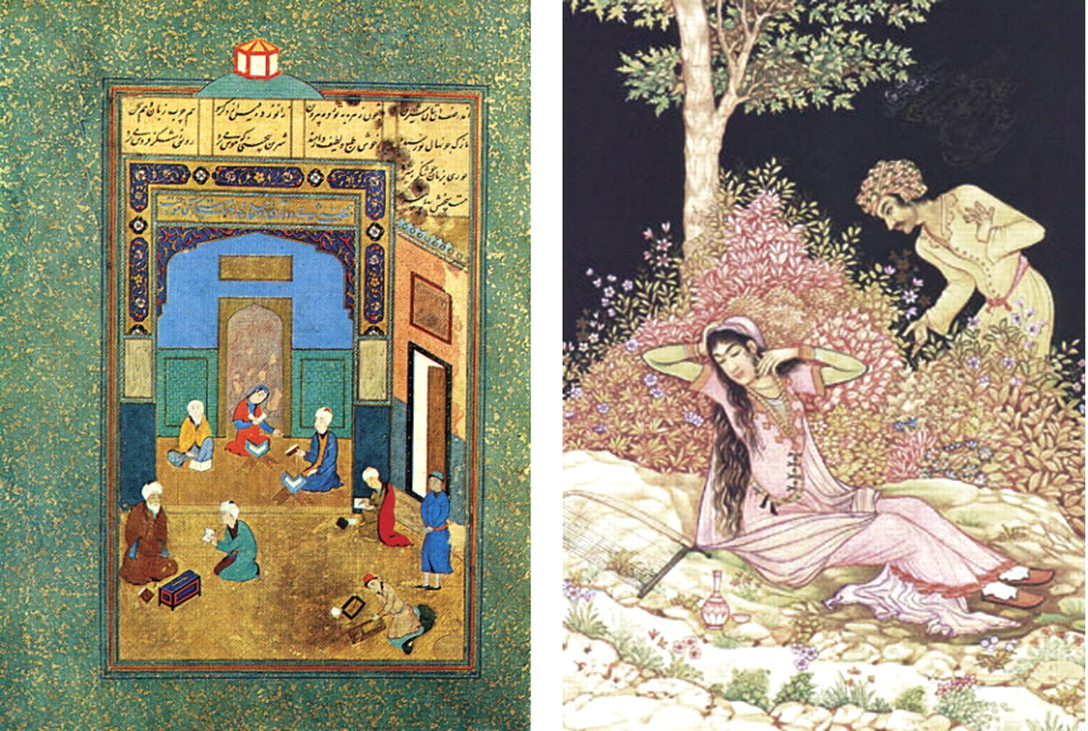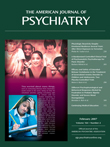Abu Ali al-Hussain ibn Abdallah ibn Sina, known as Avicenna in the West, was born in the village of Afshaneh near Bukhara in Old Persia in A.D. 980
(1) . His native language was Persian, although he educated himself in Arabic, which was the formal language in the Islamic territories of his time. Avicenna became versed in the sciences of the time by age 10. He continued to study philosophy and medicine and went to Jurjan, Ray, Hamadan, and Isfahan. Avicenna reviewed all previous medical knowledge and added his own observations to compile the
Canon of Medicine (Al-Qanun fi al-Tibb), which led the way for medicine during the medieval age. He died in Hamadan in A.D. 1037. The Canon was written in five books, the third of which dealt with disorders of the nervous system and the psyche
(2) . We summarize a chapter of the Canon dealing with the so-called
disorder of love, which could represent the first mention of an adjustment disorder.
Avicenna wrote the following:
A cachectic patient was brought to me with a plethora of chronic and debilitating diseases and prolonged fever, all of which were related to the love disorder. By reaching his sweetheart, I was amazed at how quickly he became reenergized. So, it became clear to me that human health is obedient to and under the control of mind. (
2, p. 136)
Avicenna described the love disorder as an obsessive disorder resembling severe depression in which the patient is overloaded with imaginary figures and obsessive thoughts. Physically, this disease is characterized by poor grooming, sunken and dry eyes, repetitive blinking, and excessive laughing with intermittent crying. Cardiopulmonary changes, such as rapid and paused breathing, perspiration, and an irregular pulse may occur. Inappropriate affect and sleep impairment are commonplace. This disorder may also present itself as depression, mania, and conduct disorders, requiring their specific treatments.
Avicenna stated that the identification of the beloved one is the cornerstone in the management of such patients. As a diagnostic tool, numerous names should be spoken while monitoring the patient’s pulse. A change in the pulse rate and the quality upon naming the appropriate name might indicate the name of the beloved one. The test also should be repeated for different titles, vocations, places, and cities together with the liable name to further locate the suspected person. This name and pulse test is a classic example of a psychosomatic reaction. Avicenna recommended that physicians make the effort to verify a legitimate marriage of the patient and his or her beloved one if the diagnosis is certain. If this is not possible, other options must be undertaken. The patient may be provoked to love someone else so that he or she may forget the initial person. Blaming and scoffing may sometimes work. Discussion with the patient on the obsessive and manic nature of his or her disease is also useful. The patient can be kept busy by means of (artificial) conflict and struggling with others to divert his or her attention. The patient may also benefit from outdoor activities, such as hunting and gaming. The denunciation of the beloved one may be beneficial but may also have a negative impact.
The love theme has always been a critical issue in Persian literature. A medical consultation for this might have been a significant occurrence in medieval Persia so that Avicenna specifically regarded the love disorder as a distinct entity. The description of the love disorder includes features of mood, anxiety, conduct, and obsessive-compulsive disorders. The presence of an identifiable stressor together with the resolution of symptoms upon its termination suggests that such descriptions correspond with an adjustment disorder. Avicenna wisely differentiated severe mood and anxiety disorders, although he noted that the love disorder may mimic them. Now, it is well known that coping with a stressor is essential in managing an adjustment disorder
(3) . The clarification and interpretation of the stressor, cognitive behavior therapy, and interpersonal psychotherapy are treatment options for an adjustment disorder (3). Similar notions can also be found in the writings of Avicenna. Ultimately, Avicenna contributed much to psychosomatic medicine by his novel descriptions of various psychiatric disorders and their relations with body physics.


